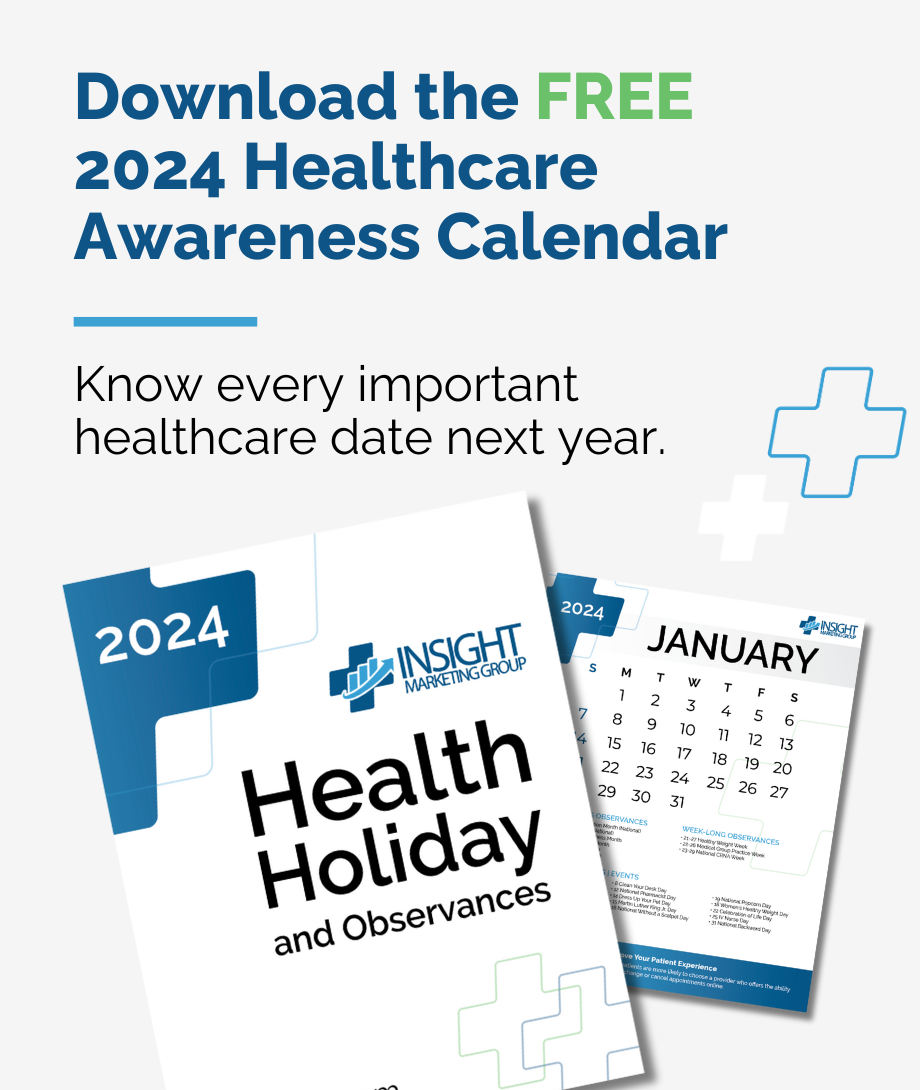 How should medical practice marketing change during a global pandemic? This article will share tips on how to improve the patient experience during COVID-19, what adjustments should be made to messaging on social media and your website, and outline ways to use marketing to engage your patients and employees.
How should medical practice marketing change during a global pandemic? This article will share tips on how to improve the patient experience during COVID-19, what adjustments should be made to messaging on social media and your website, and outline ways to use marketing to engage your patients and employees.
Medical practices, like most businesses, are struggling to hone their efforts to attract patients during an ever-changing and uncertain time. It’s left many doctors and practice managers wondering what to expect in the coming months. Some of the questions we hear every day include:
- How has marketing shifted during COVID-19?
- What have we learned from working with practices nationwide
- What should practices do now to change their marketing strategies to improve their bottom line?
MGMA Podcast: Marketing in Today’s COVID-19 Environment with Insight Marketing Group President Jennifer Thompson
Insight Marketing Group President Jennifer Thompson was recently featured on the MGMA Podcast to share many of the strategies for marketing your practice in today’s COVID-19 environment featured in this article.
How Has Marketing Changed During COVID-19?
 Your efforts to communicate with patients is now more important than ever. This includes current patients and their families but also future and potential patients. While many practices suffered financially as elective procedures stalled, the pandemic also brought opportunities to build new patient relationships. Your practice can achieve this by becoming the trusted advisor to the community, a stable resource in a time of great uncertainty. We use marketing to build these relationships and ultimately, improve your bottom line.
Your efforts to communicate with patients is now more important than ever. This includes current patients and their families but also future and potential patients. While many practices suffered financially as elective procedures stalled, the pandemic also brought opportunities to build new patient relationships. Your practice can achieve this by becoming the trusted advisor to the community, a stable resource in a time of great uncertainty. We use marketing to build these relationships and ultimately, improve your bottom line.
Marketing is a two-pronged effort now. There is the crisis communication part of marketing, that requires practices to use their website as a way to share information on lockdown, quarantine, and social distancing protocols. But we should also use this crisis as an opportunity to build stronger bonds and trust with our communities and the patients we serve.
Marketing your medical practice during COVID-19 must evolve into a priority. Even before COVID-19, marketing was playing an increasingly important role in patient communications. But what measures do practices need to tackle now to increase crisis communications while building patient relationships?
Patient Messaging During COVID-19

Some of the challenge practices face today include staying current in their marketing responses during a time of fluidity, where strategies can be thrown out in an instant. We’re seeing more experimentation as standard strategies are discarded. One big change is that websites and social media evolved into the lifeblood of patient communication for most practices. New protocols, new regulations, and our evolving response to the pandemic are all communicated faster on social media and practice websites. These marketing tools are more critical because patients are hungry for information and, as a result, they’re paying more attention to these resources.
The most successful practices during this time can leverage their existing social media influence to engage their audiences. But even practices that are just beginning their social media activities are reaping the benefits of these communication vehicles to educate and inform patients in the following ways:
- Regulatory Information
- What are the latest mandated mask and social distancing requirements?
- Health Advice
- How can patients stay safer with hand washing, social distancing, and mask-wearing?
- Patient Experience
- What will the patient experience with your practice be like during the COVID-19 crisis?
Marketing messages using your website and social media should incorporate these three areas, although strategies and tactics will change. The messaging should focus on how do we prepare our patients for our new practice reality in the COVID environment?
For example, telemedicine is an old tool that has suddenly become a necessity for the majority of practices. But will your older patients adapt well to this change? Or, do your patients understand their car may be their waiting room experience? You can use marketing to help transition patients to help them understand and accept these new experiences as part of the new normal.
Top COVID-19 Marketing Tips for Your Medical Practice
 During this crisis, social media and a website are your most important practice tools. If your practice has simply dipped a toe periodically into social media, now is the time to go swimming. Coming up with a standard weekly post is no longer good enough; practices must be IN social media and not just ON it. At first, this will be a time-consuming intensive strategy as you build content.
During this crisis, social media and a website are your most important practice tools. If your practice has simply dipped a toe periodically into social media, now is the time to go swimming. Coming up with a standard weekly post is no longer good enough; practices must be IN social media and not just ON it. At first, this will be a time-consuming intensive strategy as you build content.
However, we’ve seen that the practices that have done social media properly are now reaping the rewards and are coming out more successful at developing an audience. If a medical practice is relying on its website and doesn’t have a strong social presence, it’s never too late. Pick one channel (we recommend Facebook for the sheer volume of users) and build your activity.
Social media activity can be a low-cost practice activity that yields huge ROI quickly. One tip is to involve the whole practice in your efforts. Say you want to push outpatient surgeries but don’t have a big budget to communicate with patients. Talk to your clinical teams about getting quick videos of patients in recovery (with the right permissions, of course) for a quick, cheap, but very effective social post. Alert your healthcare teams to be alert for the right opportunities to promote your practice on social.
With that said, your website remains your first line of communication during COVID-19.
As you develop new protocols or have limited capacity or the patient experience changes, we recommend a red bar at the top of your website that will immediately draw the patient’s eyes to the messaging you need to convey.
Another tip is to make sure your Google My Business pages are always consistent with your website information. If it says your office is open but you’re not, it’s going to frustrate and confuse patients.
Finally, we’ve learned you can’t outsource your medical social media to a general firm, you must use a medically-specific healthcare marketing firm. Having the added hurdle of a marketing partner with a learning curve about the topics that matter to your patients, slows down your practice at a time when reaction time is critical.
Free Healthcare Awareness 2024 Calendar
Nearly every month of the year has a health holiday or observance, and there are also a number of awareness months that your patients and staff would love to know about. You also don’t want to miss chances to celebrate with your practice’s followers.
Free Healthcare Awareness 2023 Calendar
Nearly every month of the year has a health holiday or observance, and there are also a number of awareness months that your patients and staff would love to know about. You also don’t want to miss chances to celebrate with your practice’s followers.
Keeping Your Medical Practice Relevant During Coronavirus
Patient messaging must be very deliberate because this target audience is really paying attention to the communications coming from your practice. This elevates your marketing team as a critical component beyond communication and into practice builders. The efforts to build your practice as a stable resource during troubled times should even extend to engaging remote or furloughed employees. Authentic communications on social media, on your website, and in other channels, provide the stability your patients, employees, their families, and the community at large are desperate for when so much seems uncertain.
The biggest takeaways from the COVID-19 pandemic are that now is not the time to hit the brakes on marketing. The most successful practices look at this as an opportunity to try new things, like telemedicine, or social media marketing, so that they have a backlog of patients ready to come to their practice when reopening is complete. During this time, medical practices should:
- Pivot fast from marketing strategies and stay nimble.
- Remain ultra-sensitive to messaging across marketing channels.
- Use marketing to stay relevant to their target audiences.
